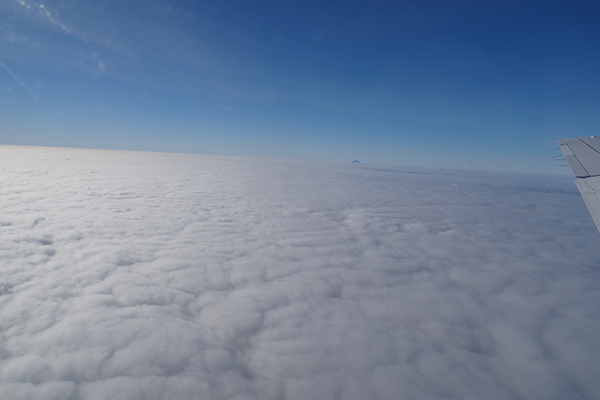Where are the particles over the oceans from?
Jian Wang to study formation of particles around marine boundary layer clouds

Marine clouds over the open oceans form as water vapor condenses on aerosol particles, and these clouds play an important role in the Earth’s climate. Researchers have found that new aerosol particles form near the clouds under certain conditions, and these particles influence the clouds’ properties and thus, the climate. However, how and why these particles form is not well understood.
Jian Wang, professor of energy, environmental & chemical engineering in the McKelvey School of Engineering at Washington University in St. Louis, will lead a team of researchers that will analyze data collected from field studies to better understand how the particles form over open oceans and their impact on cloud properties with a three-year, $457,778 grant from the National Science Foundation. The work builds on previous research published in Nature Communications in January 2021.
With the new funding, Wang and his team will be the first to synthesize data from a large number of previous field studies to quantify the altitude range, condition and frequency of the new particle formation in the marine boundary layer as well as how these particles vary by season and location. They also will combine simulations from the Weather Research and Forecasting model coupled to Chemistry (WRF-Chem) model with measurements of trace gases, aerosols and clouds carried out in previous field studies to gain insight into how the new particles form. Then, they plan to study the impact of the new particle formation on marine clouds, which have large spatial coverage over the oceans.
“We are trying to combine measurements taken from the research ships and aircraft over the ocean to see under what conditions the new particles form and whether such new particle formation occurs over different geographic regions,” Wang said. “We have a general idea of what causes these particles to form, but there are a lot of details we don’t know.”
Wang and his team will use the models to simulate the conditions of the marine boundary layer to see if such particle formation events can be reproduced. They will simulate cloud and aerosol particles over an area of 60 km x 60 km divided into 100-meter cells, which show a finer grain size and more detailed processes.
To date, it is a challenge to quantify the change of cloud and climate due to the influence of aerosol particles. By conducting this research, Wang said, he and other climate researchers will be able to make more accurate assessments of the aerosol population over oceans and the effects of aerosols on marine clouds and future climate change.
As part of the work, Wang will collaborate with the university’s Institute for School Partnership to share their research methods with area high school teachers and students.




